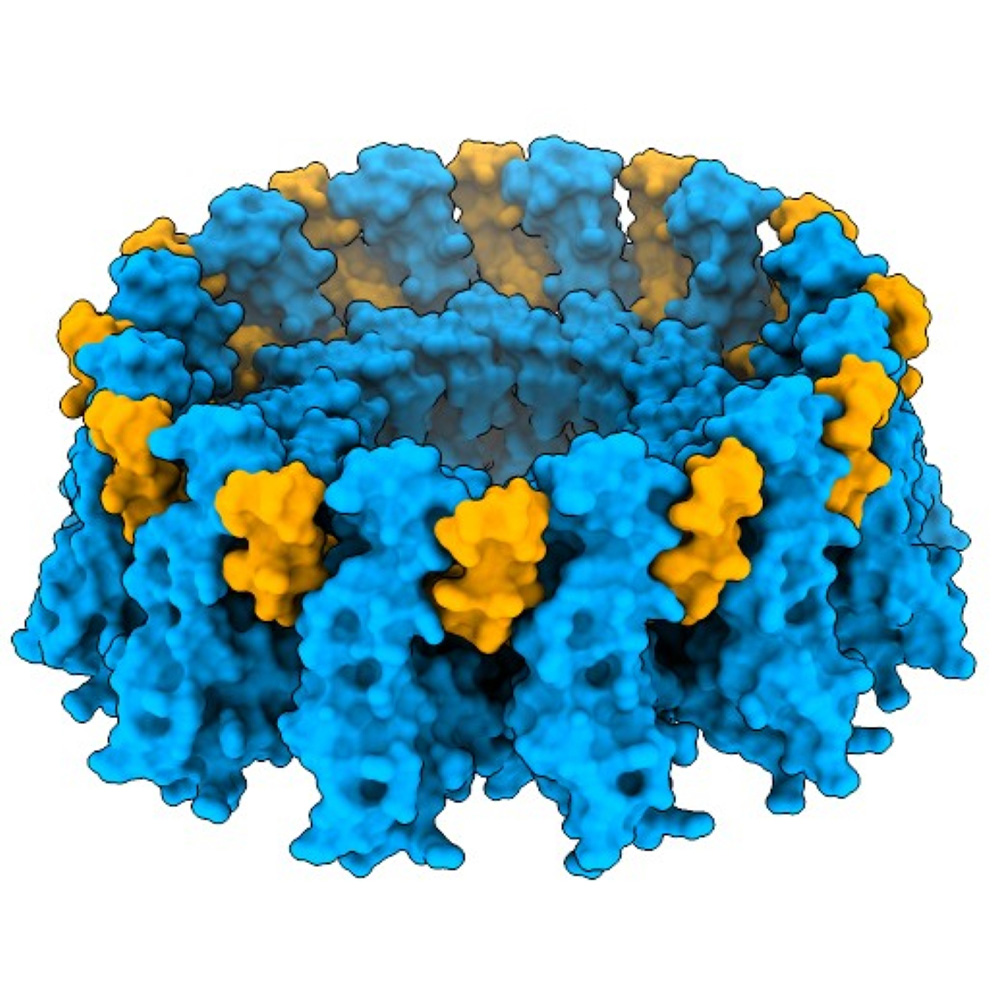Microprotein plays vital role in fat accumulation
Findings from UTSW researchers, colleagues could lead to new treatments to improve metabolic health and reduce risks of obesity, diabetes

DALLAS – Nov. 24, 2025 – A microprotein called adipogenin appears to play a key role in helping fat cells store lipid droplets – a phenomenon that’s pivotal for metabolic health, a study co-led by UT Southwestern Medical Center researchers shows. The findings, published in Science, could lead to new strategies to improve healthy lipid storage, which in turn may reduce risks of obesity, diabetes, and other metabolic conditions.
“This study builds upon our long-standing interest in how fat cells maintain their cellular health upon expansion. We show that a tiny microprotein punches far above its weight in sculpting fat biology,” said Philipp Scherer, Ph.D., Professor of Internal Medicine and Cell Biology and Director of the Touchstone Center for Diabetes Research at UT Southwestern.

Dr. Scherer led the study with co-first authors Chao Li, Ph.D., and Xue-Nan Sun, Ph.D., Instructors of Internal Medicine at UTSW, and co-senior author Elina Ikonen, M.D., Ph.D., Professor of Anatomy at the University of Helsinki.
After every meal, Dr. Scherer explained, any lipids that aren’t burned immediately for energy must be stored in the body. The most common and healthy place to store lipids is in fat cells, or adipocytes, which stockpile these nutrients as droplets, much like oil forms droplets in water. Lipids stored in other cell types can cause a condition called lipotoxicity, spurring cell damage and cell death.
Previous research at UTSW and elsewhere has shown that a protein called seipin is critical for healthy lipid storage in a diverse range of organisms, including plants, fungi, and mammals. But how seipin accomplishes this feat has been unclear. Some studies have suggested that adipogenin – a small protein made of only 80 amino acids as compared with the hundreds found in seipin – is also important for lipid storage, but its exact function was unknown.
To answer these questions, the researchers isolated adipogenin along with its interacting proteins from mice, which produce a form of this microprotein that’s nearly identical to the one in humans. The most common binding partner for adipogenin turned out to be seipin.
Using cryo-electron microscopy, a technique that can image molecules at the atomic level, researchers showed that adipogenin appeared to reinforce seipin’s structure, making it more rigid and stable. Working with mouse models that overproduced adipogenin, the scientists found that their fat cells held significantly larger lipid droplets. They also stored considerably more fat than unaltered mice. In contrast, mouse models that produced no adipogenin had much smaller lipid droplets in their fat cells and less fat overall.
“This study nudges us a little closer to the clinic by revealing a brand-new handle on how fat cells store lipids, which matters enormously for obesity, diabetes, lipodystrophy, and fatty liver disease,” Dr. Scherer said. “Adipogenin becomes a druggable lever on seipin’s machinery, with the promise to either dampen harmful fat buildup or boost healthy adipose storage when needed.”
He also noted the involvement of many UTSW departments – from Cell Biology to Biophysics and from Pharmacology to Biochemistry – along with the Division of Cardiology and the Center for Hypothalamic Research in this study. “This research is an example of how well integrated our scientific efforts can be at UT Southwestern,” Dr. Scherer said. “It combines cell biology, yeast genetics, mouse models, molecular simulations, and a whole lot of efforts through UT Southwestern’s Cryo-Electron Microscopy Facility.”
A complete list of contributors can be found in the study.
Dr. Scherer holds the Gifford O. Touchstone, Jr. and Randolph G. Touchstone Distinguished Chair in Diabetes Research and the Touchstone/West Distinguished Chair in Diabetes Research.
This study was funded by grants from the National Institutes of Health (NIH) (R01-DK055758, R01-DK099110, R01-DK127274, P01-AG051459, R01-DK131537, R00-AG068239, R01-DK138038, 2R56-DK108773, R01-DK136558, R35-GM119768, and R01-DK126887); NIH’s National Institute of Diabetes and Digestive and Kidney Diseases Nutrition Obesity Research Center (P30-DK127984); the American Diabetes Association (7-21-PDF-158); the Research Council of Finland (324929, 363179, 331349, 336234, and 346135); the Sigrid Jusélius Foundation; the Jane and Aatos Erkko Foundation; Foundation Leducq (19CVD04); the Helsinki Institute of Life Science Fellows Program; the Lundbeck Foundation; the Human Frontier Science Program (RGP0059/2019); the Instrumentarium Science Foundation; The Finnish Medical Foundation; and the Maud Kuistila Memorial Foundation.
About UT Southwestern Medical Center
UT Southwestern, one of the nation’s premier academic medical centers, integrates pioneering biomedical research with exceptional clinical care and education. The institution’s faculty members have received six Nobel Prizes and include 24 members of the National Academy of Sciences, 25 members of the National Academy of Medicine, and 13 Howard Hughes Medical Institute Investigators. The full-time faculty of more than 3,200 is responsible for groundbreaking medical advances and is committed to translating science-driven research quickly to new clinical treatments. UT Southwestern physicians provide care in more than 80 specialties to more than 140,000 hospitalized patients, more than 360,000 emergency room cases, and oversee nearly 5.1 million outpatient visits a year.
